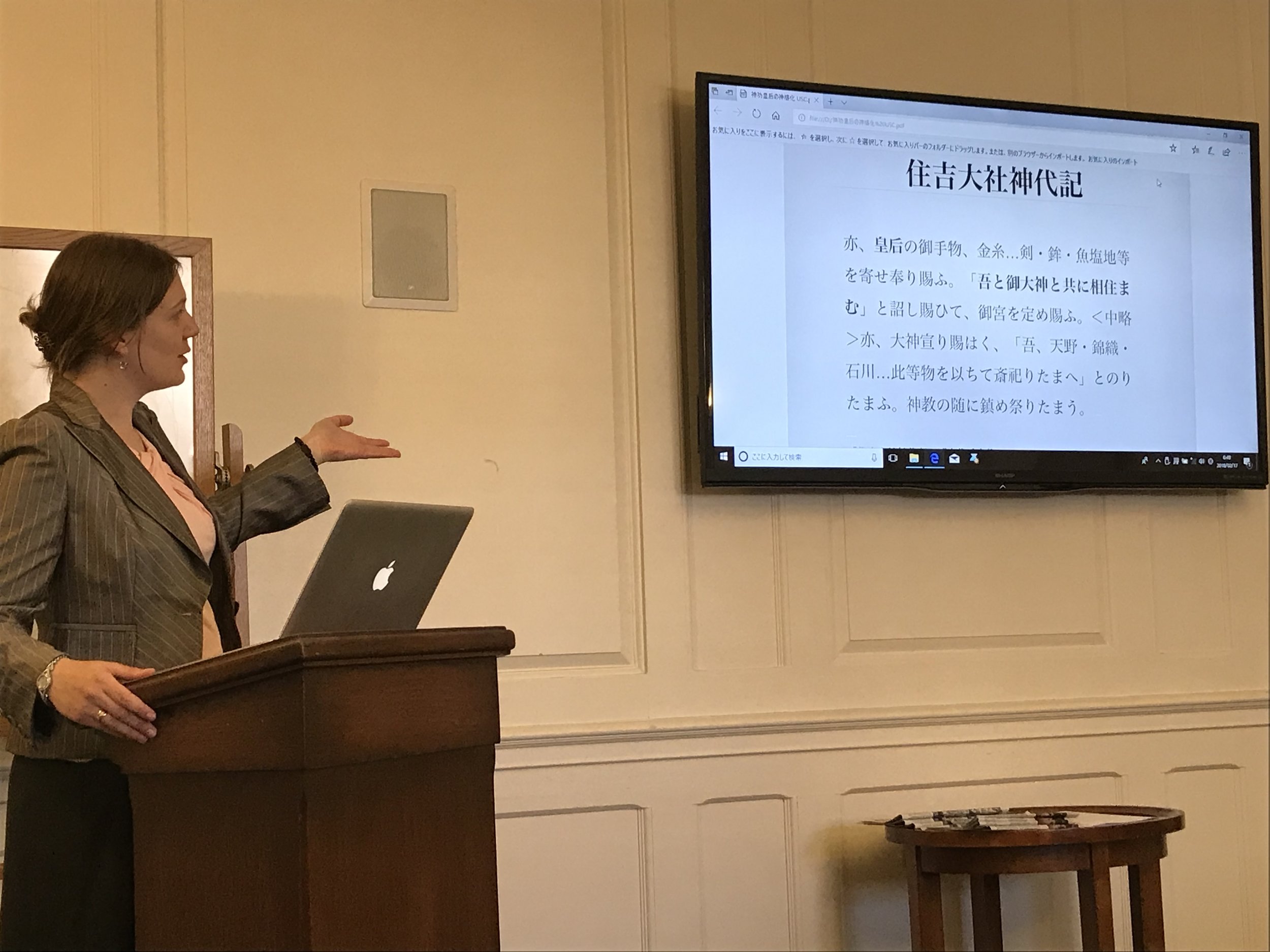Emily B. Simpson, PhD Candidate, East Asian Languages and Cultural Studies,
University of California Santa Barbara, “The Divinization of Empress Jingû, Reconsidering the Process of Deification in Premodern Japan” 「神功皇后の神格化ー神になる過程を考え直す」
Legend asserts that Empress Jingū (traditionally 169-269CE), widowed empress consort and court shaman, conquered the Korean peninsula with the advice and aid of the gods. In early narratives of this story, such as in the Kojiki (712) and Nihon shoki (720), there is no indication that the empress herself is divine. Yet Jingū is enshrined in a large number of Shinto shrines as a deity. Therefore, it is time to consider the question of Jingū’s deification. What mechanisms made her into a kami? What kind of goddess is she? What kind of shrines worship her? Taking Jingū as an example, I will examine the process of deification in premodern Japan.
In this presentation, I begin by looking at some of the origin stories (engi) that describe Jingū’s enshrinement as a deity. In engi such as the Sumiyoshi taisha jindaiki, the Kada Awashima jinja engi, and various engi in the Hachiman tradition, Jingū is enshrined alongside other kami, but the process of amalgamation differs considerably in each text. After examining how Jingū is divinized and incorporated at these shrines, I move to consider Jingū’s relationship with particular shrines, including the rare shrines in which she is the central kami. Why and when did these shrines make Jingū their central deity? I suggest that Jingū is deified and incorporated into these cultic sites and their origin stories in order to confer prestige—through her story, its longevity, and her manifold associations with the key themes of conquest and childbirth.
神功皇后の伝説を考えると、神功皇后は様々な神の教えをもらえるけど、神功皇后自身は神ではない。しかし、神功皇后は昔から神として認められ、今でも数多くの神社で祭神として祀られている。従って、皇后の神格化の問題を考えよう。神功皇后はどの方法で神になる?何のための神だろう?どんな神社で祀られているか?この質問を答えながら、神功皇后を例として神格化の過程を考慮しよう。
本報告では、まず神功皇后が神である縁起を紹介する。「住吉大社神代記」「加太粟島神社縁起」八幡信仰に関する縁起などには、神功皇后が他の神と共に合祀されているが、その神と合祀になるプロセスは各縁起によって違う。それぞれの縁起で神功皇后はどんなように神格化をされているのかを考察したい。次に、神功皇后と神社の関係を検討したい。例えば、神功皇后に関する神社は多いけど主祭神として祀られる神社は少ない。主祭神である神社はなぜ神功皇后を神として祀ることになったのか。以上の考察から、神になる過程だけではなくて、「神」という存在を再び考慮させるものにもなる。


